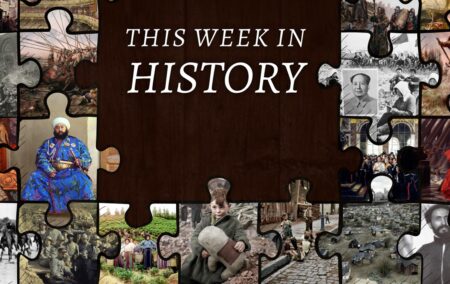This Week in History recalls memorable and decisive events and personalities of the past.
17th October 1943 – The Burma Railway (Burma–Thailand Railway) is completed

In December of 1941, during the Second World War, the Imperial Japanese Army launched an invasion of what was then the British colony of Burma (today called Myanmar). The Japanese were seeking resources to support their war against China and the United States and hoped also to block British supplies and support for Chiang Kai-Shek’s nationalist Chinese army, which were being moved through Burma into southern China.
Linking up with groups of independence fighters in Burma, the Japanese launched their invasion with 85 000 troops mostly from the Japanese Fifteenth Army, which had recently moved into Thailand, an ally of Japan. Opposing them were 45 000 British-Indian and Burmese troops who were for the most part poorly equipped and poorly trained. The nationalist Chinese army promised 95 000 troops to help the British, but these troops were even more poorly equipped.
The British Royal Air Force was unable to wrestle control of the skies from the Japanese, who, with their excellent Mitsubishi Zero fighter aircraft, gained air superiority over the British.
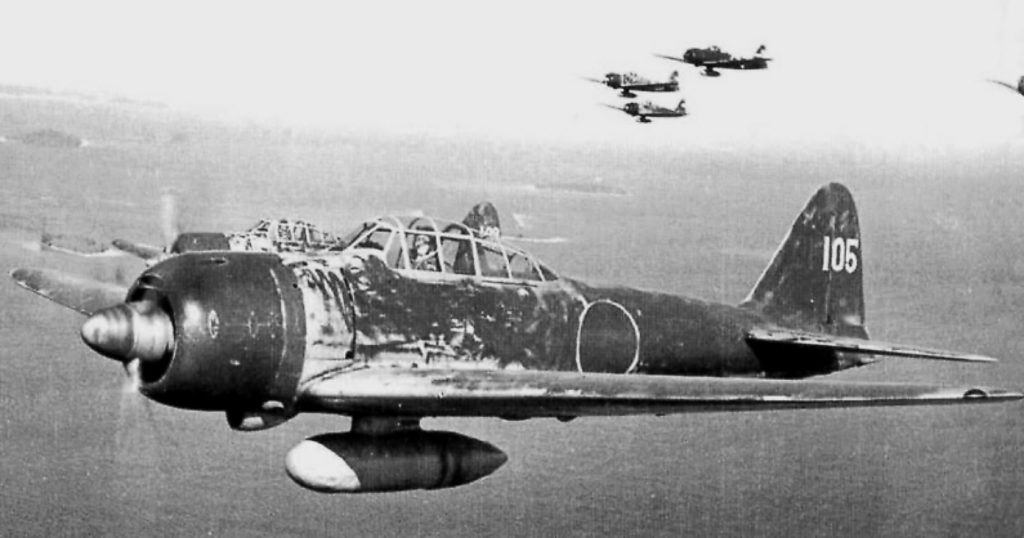
On 7 March 1942, the British and their allies abandoned the Burmese capital, Rangoon, and set fire to it to deny its use to the Japanese. They were soon driven back towards the border of the British colony of India.
The fight was not yet over, and the Japanese wished to continue their campaign into India. For this, they required supplies, which at first were brought into Rangoon from the south, having been transported by ship from Japan through the Straits of Malacca. However, after the Battle of Midway in June 1942, the Japanese navy’s power was greatly diminished and their ships became vulnerable to British and American submarines.

To solve this problem, the Japanese sought to build a railway between Bangkok in Thailand and Rangoon in Burma. The Japanese called this the Thailand-Burma-Link-Railway. Within a few years, the world would know it as the Death Railway.
The project began on 17 September 1942 and was scheduled to be completed in December 1943.
In order to build the railway – through the hot jungles and the rough hills and across the many rivers of the Thai/Burma border – the Japanese employed around 11 000 Japanese workers, and 800 Korean workers along with 61 000 Allied prisoners of war (POWs) from Britain, the Dutch East Indies, Australia and the United States. The Japanese also recruited or coerced 180 000 civilians from the territories they had conquered in South-East Asia.
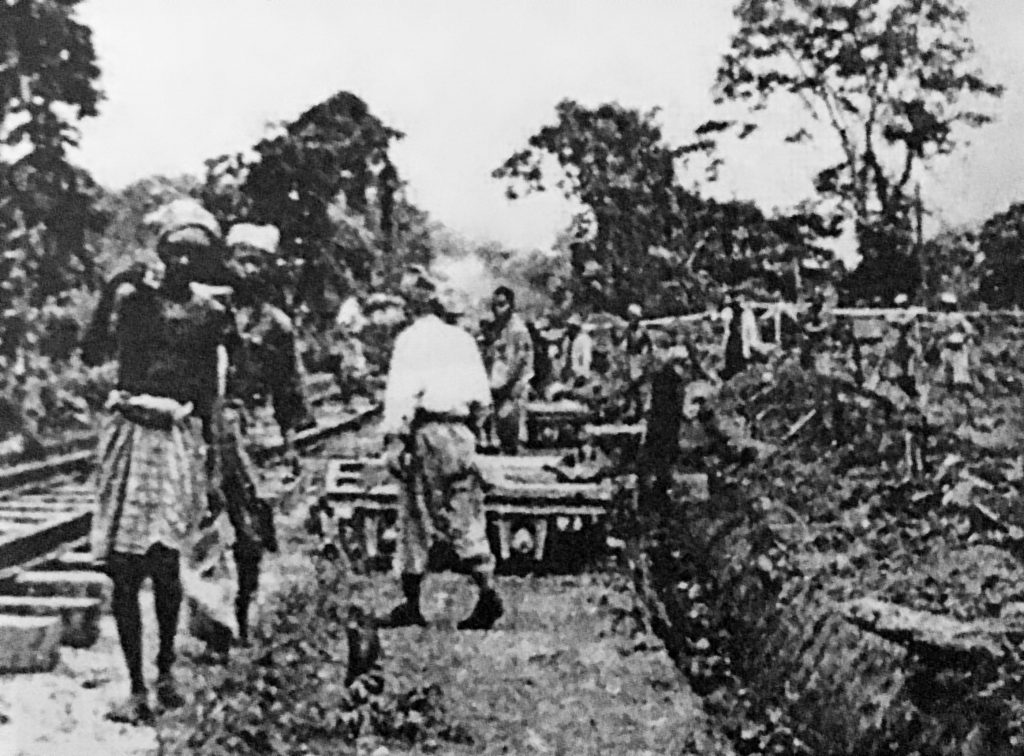
While the Japanese workers were treated relatively well, the tropical diseases and rough climate of the region saw around 8% of their work crews die from disease and the harsh conditions. As for the Allied POWs and local workers, the Japanese guards were less kind and regularly carried out acts of extreme brutality and cruelty on the workers. On one section of the railway, the Hellfire Pass in the Tenasserim Hills, the Japanese guards beat 69 men to death in the 12 weeks it took to cut through the rock of the pass.
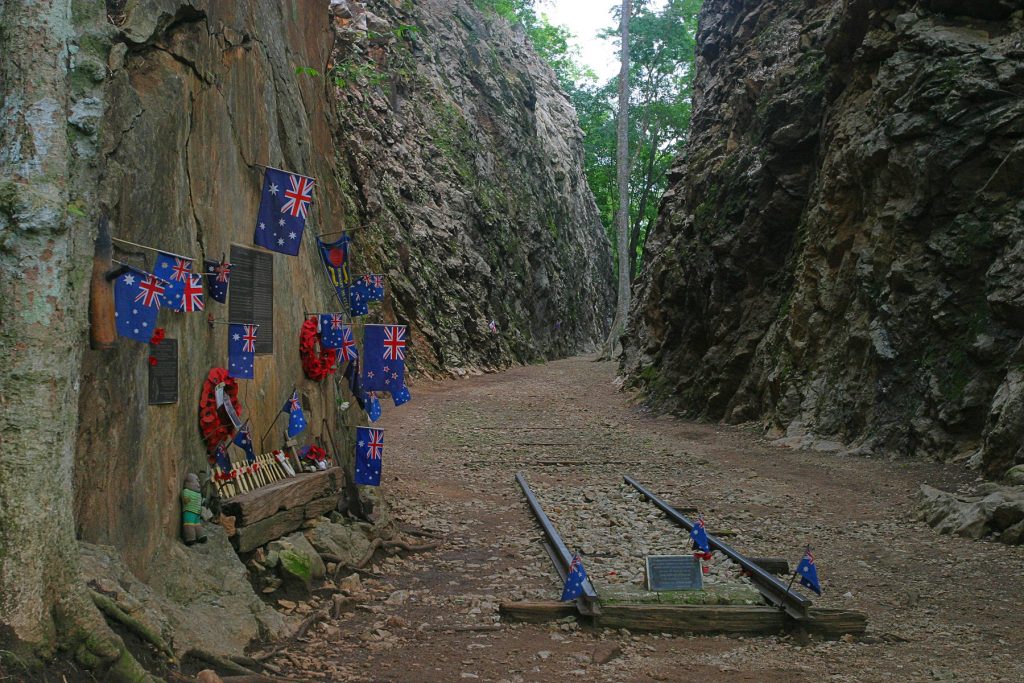
Other men died of exhaustion when the Japanese literally worked them to death. Malaria, cholera, dysentery and tropical ulcers were common among the work crews and little in the way of medical supplies was made available to doctors caring for them.
In some work camps, the Japanese allowed only a certain percentage of men to ‘be sick’ at any one time; as such doctors were forced to send very sick men out to work, and die, on the rails, so that they might save the lives of less sick men in the hospital. Food rations were also severely restricted, and this contributed greatly to the death rate. On average, the prisoners lost at least 15-20 kg of body weight.
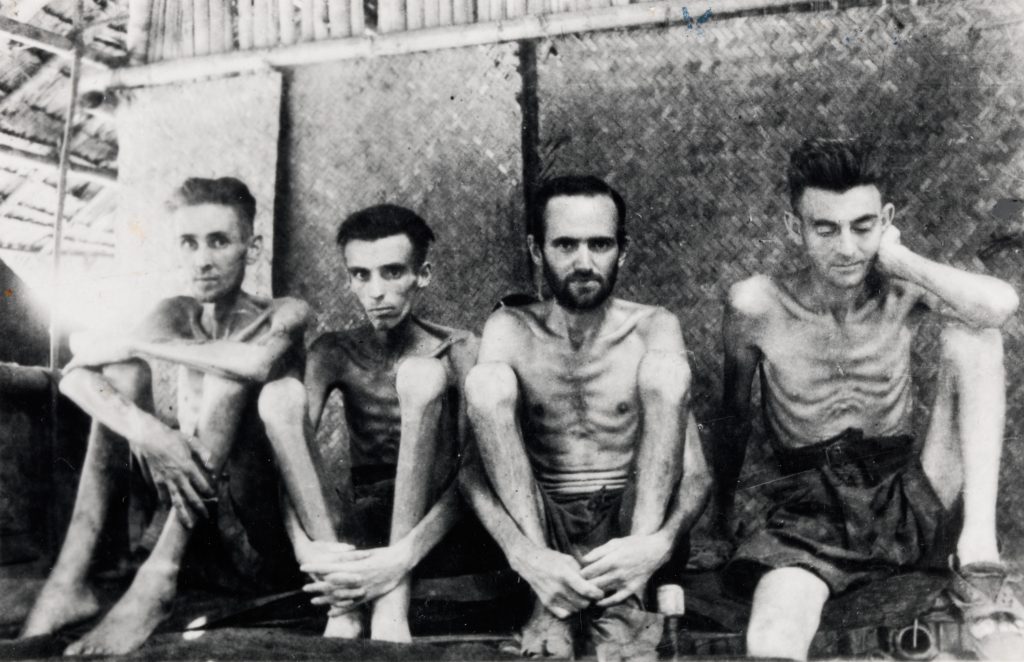
The death rates were appalling. Among the Allied prisoners – mostly young fit and able soldiers to start with – the death rate was on average around 20%. However, on some sections of railway, the rate was much higher. Around 12 600 Allied prisoners died building the railway.
Among the locally recruited labour, the number of casualties is not as certain, with some estimates suggesting as many as half the workers died as a result of the same cruelty and lack of support that caused so many deaths among the prisoners.
After the war, 111 Japanese military officials were tried for war crimes by the Allies. Of these, 32 were sentenced to death.
The railway was finished a month and a half ahead of schedule, on 17 October 1943.
18th October 1081 – The Normans defeat the Eastern Roman (Byzantine) Empire in the Battle of Dyrrhachium

In 1071, the Eastern Roman Empire (the Byzantine Empire) had suffered a humiliating defeat at the hands of the Seljuk Turks in eastern Anatolia, outside the fortress of Manzikert, in which the emperor was captured.
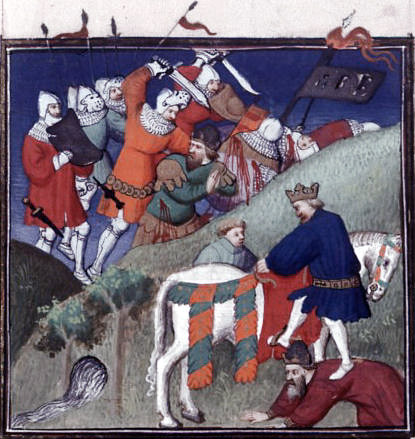
In the following decade, the empire slipped into chaos, with civil war resulting in most of the empire’s Anatolian cities being turned over to Turkish mercenaries, who then revolted against Roman control.
This chaos had ended when a new emperor, Alexios Komnenos, emerged as the new Emperor of the Eastern Romans. He quickly began working to restore the empire’s lost territory and stabilise the realm.

A few decades earlier, a new force had arrived in southern Italy, a region which was fragmented between Arab princes, Lombard lords and a few Byzantine-controlled cities: a group of French-speaking men descended from Vikings, who had come from Normandy to fight as mercenaries.
These Normans had quickly realized their heavily armoured knights were superior to all local troops and so turned from mercenaries into warlords, taking cities and fortresses for themselves. In 1054, they defeated a coalition of Italians, Greeks and Lombards led by the Pope and became the dominant power in Southern Italy.
The leading man among the Normans was Robert Guiscard, a cunning and amoral warlord who bubbled with ambition.
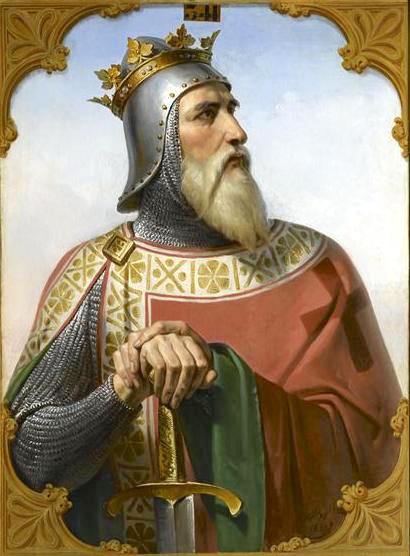
In 1073, after Robert had captured the last Eastern Roman city in Italy, the Eastern Roman emperor had married his son to one of Guiscard’s daughters in an attempt to secure his flank against the Normans.
By 1081, with the old Emperor’s son removed from the line of succession by Alexios, and with the empire weakened and in chaos, the cunning Robert decided the time was ripe to launch an invasion of Roman-controlled Greece.
Setting sail in May of 1081, Robert landed a force of 15 000 Norman knights, Italian footmen and mercenaries in what is today southern Albania, near the Byzantine city of Dyrrhachium. Alexios had heard of his coming and had asked his Venetian allies, who feared the Normans, to send ships to Dyrrhachium. These arrived soon after the Normans and defeated the Norman navy. Dyrrhachium could now be supplied by sea. But the large Norman army on land was still standing and laid siege to the city. Robert quickly brought many local Byzantine nobles and towns in the area over to his side with threats and bribes, and so was reasonably well supplied.
Alexios gathered an army of 23 000 men to face Robert and expel him from Greece. His army consisted of Thracians, Macedonians, Manichaeans, Thessalians, Slaves, Armenians, Turkish horse archers, Frankish knights and 1 000 of his fearsome Varangian guards, who were mostly from England and Scandinavia.
On 15 October, the Roman army arrived to face the Normans, and –against the advice of his generals – the emperor Alexios began making preparations for an immediate attack. On 18 October the two armies clashed, and at first the Romans got the better of the Norman right flank, which broke and ran after heavy attacks by the Byzantines.
However, the Varangian guards in the centre, seeing the Normans to their right and desperate for revenge against the people who had conquered their homeland in 1066, charged out of formation in pursuit of the fleeing Normans. This break in the Roman line was exploited by the Norman knights who routed the Roman army. In making his escape, Alexios was wounded in the forehead and lost a lot of blood, but eventually made it back to safety.
The defeat was serious for Alexios, and Dyrrhachium fell to the Normans the next year. Alexios would suffer further defeats at the hands of the Normans, but would decisively defeat his enemy in their fourth battlefield encounter. Alexios also disrupted and slowed the Normans by paying their subjects in southern Italy to revolt while the army was in Greece, and by encouraging the Norman’s enemies in Europe to attack their northern flank.
In the end, the Norman invasion was beaten back, and the Eastern Romans would secure their empire. Alexios and Robert’s son, Bohemond, would meet again during the first crusade, but that is a tale for another day.
19th October 1950 – China defeats the Tibetan Army at Chamdo

Tibet had come under Chinese control in 1720 when the Qing dynasty’s soldiers had expelled the Dzungar Khanate which had ruled much of modern Tibet. In 1904, as China fell into chaos in the years leading up to the 1911 Xinhai Revolution, the British invaded Tibet to secure the region and prevent the chaos spilling over into British-controlled India. In 1913 the region of Tibet became a de facto autonomous region, effectively an unrecognised independent country. Tibet ruled itself for the next few decades.
In 1949, the Chinese Communist Party began to decisively gain the upper hand in the civil war with the nationalist government, and, as the nationalists retreated, the Tibetans expelled all nationalist Chinese officials and diplomats to reduce the risk of the communists seeing them as a threat. Unfortunately for Tibet, when the People’s Republic of China was declared in 1949, the Communists claimed all territory formally owned by the Qing empire, including Tibet.
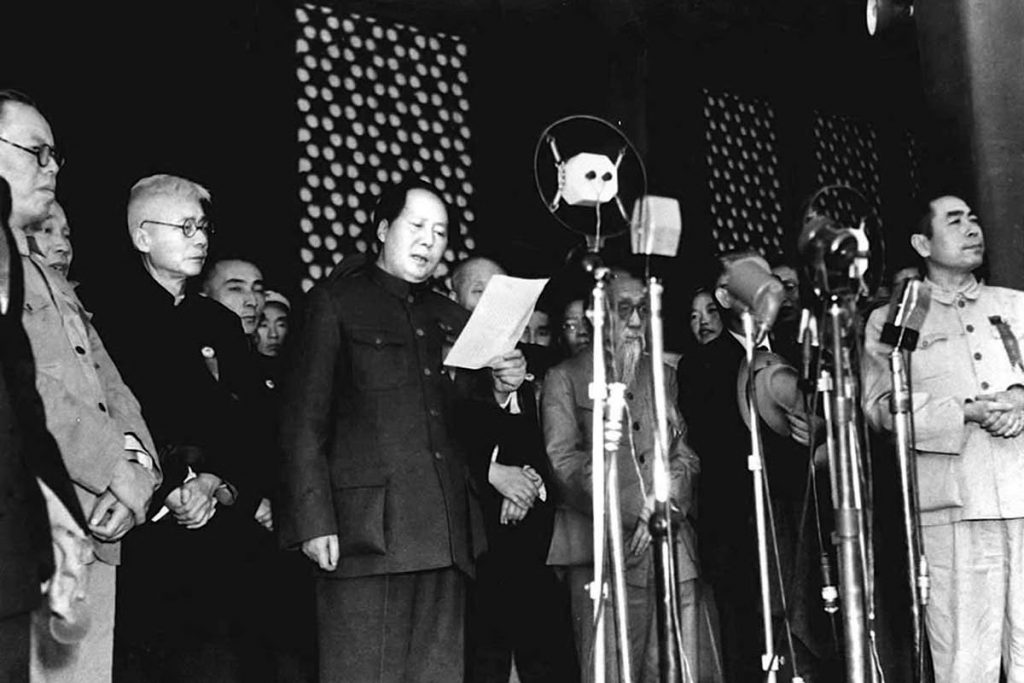
Tibet sought to negotiate with China at first and sent several delegations to try and gain Chinese recognition of their sovereignty. The Tibetans declared:
‘Tibet will remain independent as it is at present, and we will continue to have very close ‘priest-patron’ relations with China. Also, there is no need to liberate Tibet from imperialism, since there are no British, American or Guomindang imperialists in Tibet, and Tibet is ruled and protected by the Dalai Lama (not any foreign power).’
However, in October of 1950, under the pretext of ‘liberating’ the Tibetans from feudalism and imperialism, the Chinese People’s Liberation Army invaded Tibet. The Chinese force of 40 000 fought the Tibetan army of 8 500 at Chamdo, defeating them easily. Soon after, Tibet was annexed into the People’s Republic of China.
Today, despite being an officially recognised minority of China, Tibetans are subject to discrimination and abuse by the Chinese authorities. The communist government has also sought to settle Han Chinese in Tibet to reduce the Tibetans there to a minority.
If you like what you have just read, subscribe to the Daily Friend

